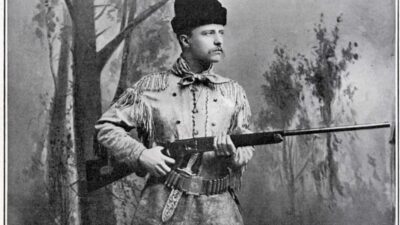OutdoorHub
Bigfoot Stories You Don’t Know About
Before the TV shows and careers dedicated to finding him, a few stories began the legend of Bigfoot. What they have in common is more akin to a horror show than some elusive and magical creature. Only the elements from these stories remain in popular culture, but the stories are real and worth reexamining. Perhaps this is thing that can’t be found doesn’t want to be found, and we should leave it like that.
WARNING: Not for the faint of heart. Only read in a well lit and fully secure location.

The Goldminers Bigfoot Battle
In the summer of 1924 four men Fred Beck, Gabe Lefever, John Peterson, Marion Smith, Roy Smith were prospecting in southwest Washington near Mount St. Helens. The following events would forever mark the area as “Ape Canyon” and sear into the public conscious “bigfoot.” But this story almost never made it out.
Good gold had been found after several years of searching and the group returned to begin building up their claim. Two of the men routinely went to gather water, taking their rifles with them as a precaution. While in the eastern pine rainforest, they spotted a large creature walking with “human-like strides” but being much bigger. Beck set the sights of his rifle on it and shot several times. Both antagonists fled in opposite directions to safety. Later, comparing notes, they describe it as being seven feet tall, weighing 400 pounds, and having long, black hair. Its ears were pointed, four toes to a foot that were short and stubby. Returning to camp the rest of the party was informed and they quickly planned to leave the next morning.
However, it would be the longest night of their night.
At nightfall the men began to hear rocks being hurled against the side of their cabin. From all sides and the roof thudding caused the chinking in the cabin to be shook loose, hitting the men. Footsteps across the wooden shakes on the roof clearly crossed the length of the cabin. Clearly startled, the men circled in the middle of one room and pointed their rifles towards openings in the logs. Rounds were sent through the roof when they heard steps and anywhere else movement was seen.
At one point what was outside attempted to get in. Together the animals slammed against the door to force their way in. The men retreated to a far corner of the cabin and fired several times through the closed door. Throughout the night the attack continued, each break in the violence being short lived. At one point a hand reached through the logs, grasping an ax before it was shot, dropping the handle and pulling back. One of the men is reported to have sung, “If you leave us alone, we’ll leave you alone, and we’ll all go home in the morning.”
Shortly before daybreak the attacks stopped and the men set to make a run several miles back to their truck and into civilization. Taking only their rifles they left the valuable equipment behind. As they made their way on the trail one of the beasts was seen eighty yards behind and the men shot at it. They were sure they hit it many times and watched it fall over a cliff. When the men reached town they alerted local law enforcement and the Forest Service. Two of the men refused to return to the cabin site and pictures of the damage exist.
Theodore Roosevelt’s Retelling

In his book The Wilderness Hunter, TR shares a story of a “grisled, weather-beaten old mountain hunter, named Bauman” who also experienced a violent interaction with bigfoot. This mountaineer had been born in the area of Montana’s Bitterroot Mountains and made his living hunting and trapping. Partnering with a friend they began to trap beaver in the area.
After making camp and trapping for some time, the returned to find their camp had been ransacked. Shrugging it off as a bear, they continued their evening routine before one of them inspected the tracks left around and found that what had been there was only walking on two legs. Bauman was unimpressed and unworried. Later that night he was awakened by a “strong, wild-beast odor.” His eyes moved to the opening of his tent where a large “body” was staring in. Grabbing his rifle, Bauman fired and the creature moved into the darkness. The next day the men worked together and returned to camp, only to find that it had been thoroughly destroyed. Again, the only tracks were from something on two legs.
They quickly decided to gather their traps and leave the area. Splitting up, Bauman would collect traps and the other man worked to break camp. He returned to the camp to find that everything seemed to be in order, packs arranged and fire burning, but nobody was around. Searching the camp he found the body of his friend. His body was warm with a broken neck and four “great fang marks in the throat.” Bipedal footprints found in the soft soil showed a scene of the man being ambushed and wrestling with the assailant before disappearing. Bauman immediately left the camp “utterly unnerved”.

Roosevelt wrote of the Bitterroot Mountains as having the finest hunting he had ever seen. He enjoyed its ruggedness and remote setting. The notes in his book leave us to wonder if Roosevelt believed the story, but he believed that Bauman believed it. That was good enough for him to include it.
The post Bigfoot Stories You Don’t Know About appeared first on OutdoorHub.


